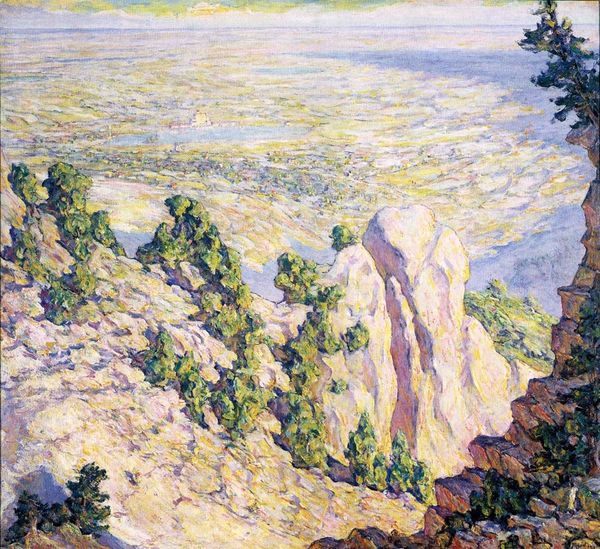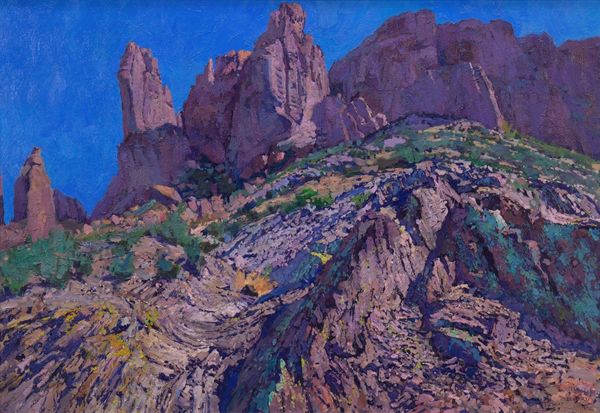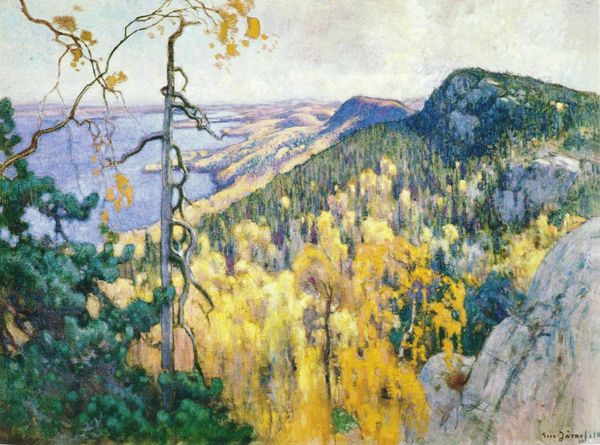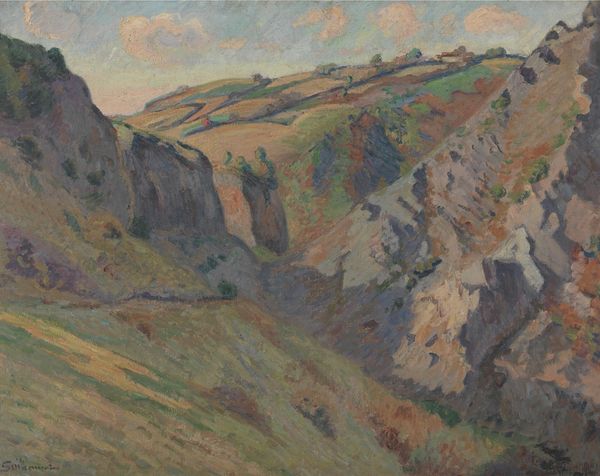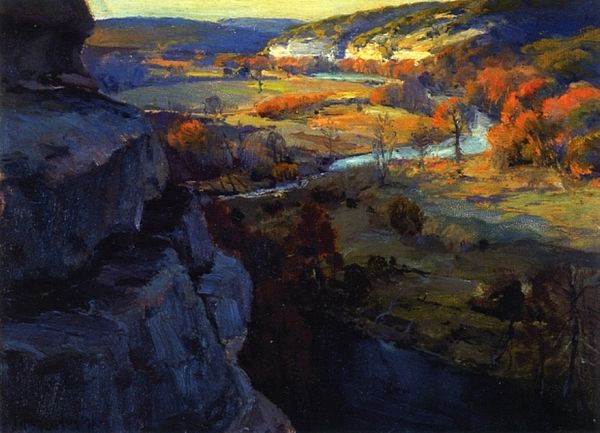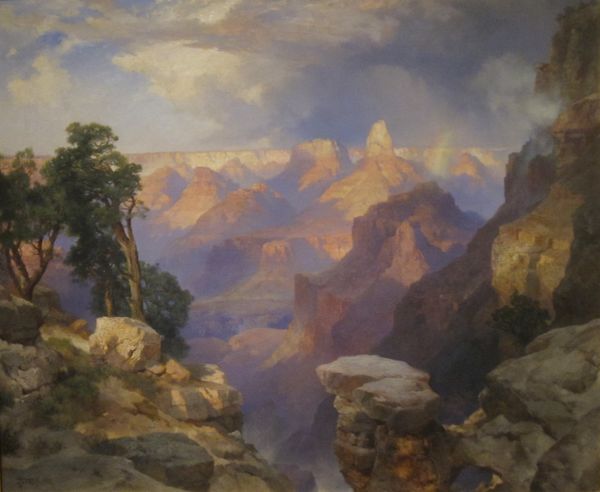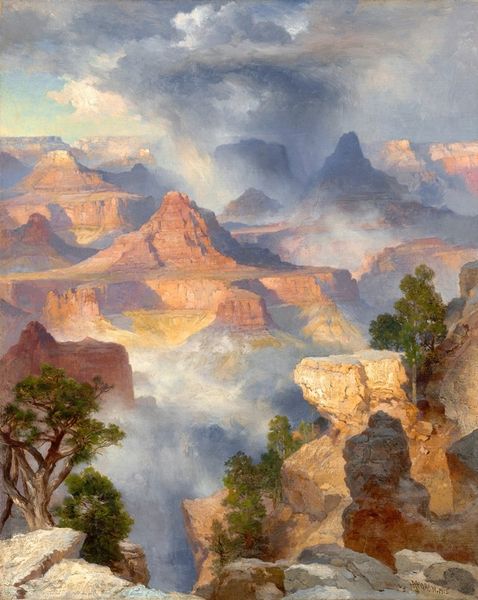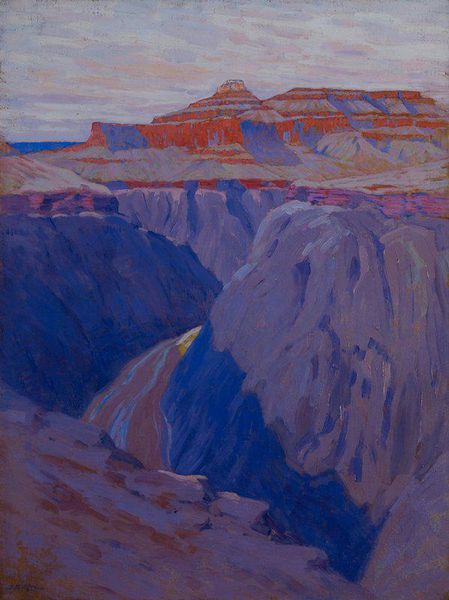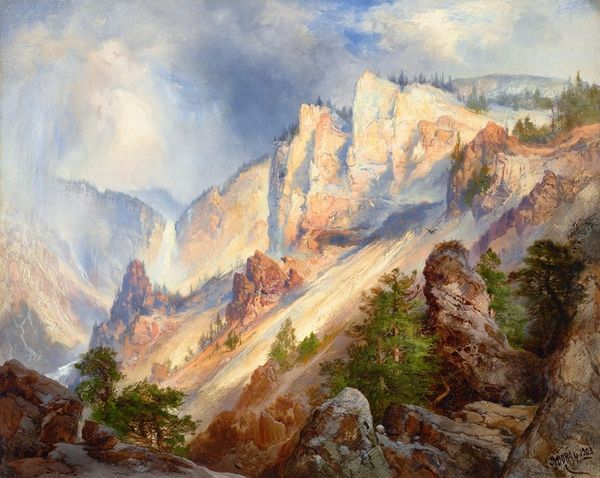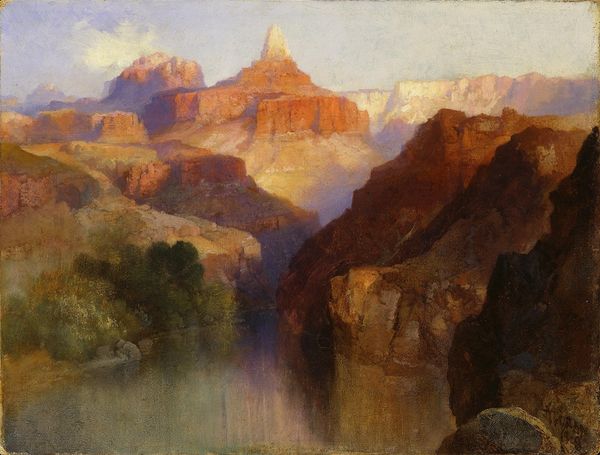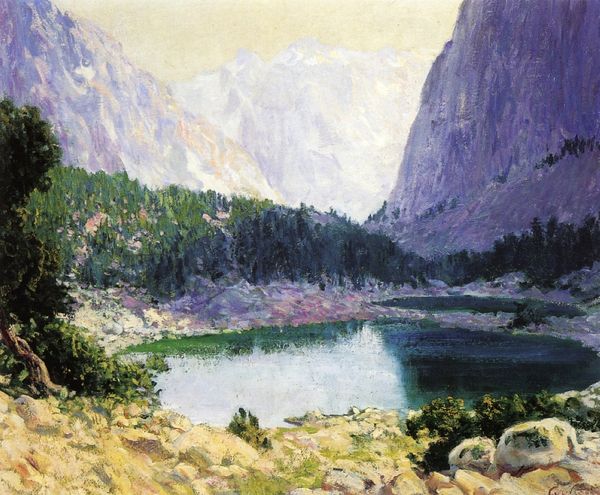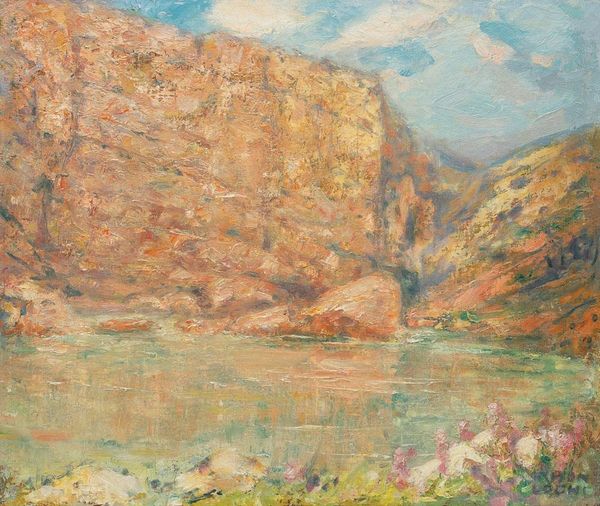
Copyright: Public domain
Curator: Edward Henry Potthast’s “Looking Across the Grand Canyon,” painted around 1910, offers a compelling glimpse into the early 20th-century fascination with the American landscape. Editor: Wow, I immediately feel this profound sense of depth and stillness. The air seems thick with the blue haze, doesn't it? You almost want to step right into the vista. Curator: Absolutely. This work aligns with the legacy of the Hudson River School in its depiction of nature as sublime, though Potthast adopts an Impressionistic style which diverges quite sharply. How do you perceive the interplay of light and color here? Editor: For me, it’s the unexpected hues—violets and blues painting the shadows—that really grab my attention. The warm, fiery oranges of the rock faces practically glow! It’s like a dreamscape painted with earthly pigments, wouldn't you agree? Curator: Interesting perspective. If we consider Potthast’s historical context, this focus on the aesthetic grandeur of the natural world reflects an emerging American identity, steeped in notions of westward expansion and resource extraction that carry, of course, quite different connotations today. The almost deliberate aestheticizing of these geological forms arguably sidesteps indigenous relationships to this terrain. Editor: Hmmm, I get your point, but art isn’t always obligated to be literal reportage. Maybe, and this is a big maybe, Potthast was simply trying to bottle some of the wonder and awe this place stirred in him, transferring it from his soul to the canvas. It feels more personal than political, you know? Like a love letter whispered in color. Curator: I see your point about the emotional tenor and aesthetic choices, and I won't push that perspective. However, I think recognizing those social-historical forces as having influenced this and other similar art from this period is valuable in encouraging a deeper understanding of the artist, the art and, just as importantly, the values of the audience admiring the work at that moment. Editor: Food for thought, definitely. So next time I wander the Canyon’s rim, I'll remember Potthast and consider the complex lens of history, and feeling, through which he framed it. It changes things! Curator: Precisely. Engaging art history and socio-political awareness to open richer conversations: this approach enhances our perspectives toward a fuller more rewarding appreciation.
Comments
No comments
Be the first to comment and join the conversation on the ultimate creative platform.

